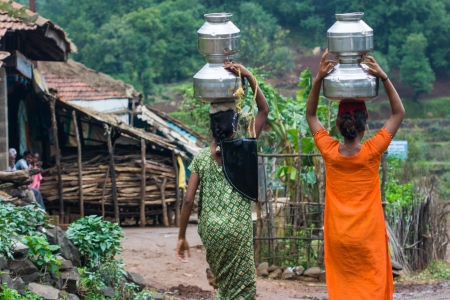Application Exercise 10h

If the world were a village of 100 people … | Column A Your Guess | Column B The ‘answer’ |
How many villagers would live without basic sanitation? (e.g. a decent toilet) |
| 37 |
How many villagers wouldn’t have clean, safe drinking water? |
| 25 |
How many cars would there be in the village? |
| 18 |
How many villagers would be children? |
| 27 |
How many villagers would share over 50% of the income? |
| 10 |
How many villagers would share the remaining 50% of the income? |
| 90 |
How many villagers would own over 75% of all the wealth in the village? |
| 10 |
How many villagers would be unemployed or underemployed? |
| 30 |
How many villagers would have money in the bank, money in their wallet and spare change around the house? |
| 8 |
How many adults in the village would be able to read? |
| 87 |
How many villagers would have electricity? |
| 91 |
How many villagers would have mobile phones? |
| 85 |
How many villagers wouldn’t have a reliable source of food and would be hungry some of the time? |
| 29 |
How many villagers would always have enough to eat? |
| 71 |
How many villagers would speak English as a first language? |
| 5 |
How many villagers would speak Chinese as a first language? |
| 16 |
How many villagers would have gone to university or college? |
| 40 |
How many adults in the village would have HIV/AIDS? |
| 1 |
- Answer the following questions about the data:
- In this village, how would spending on the military compare with spending on aid?
According to the Stockholm International Peace Research Institute, total global military spending for 2022 was $2240 billion. Global aid was $204 billion. Military spending outweighed aid spending by more than ten to one.
- What proportion of the village would be children?
Children make up 27% of the village.
- What proportion of villagers is illiterate? Explain how this might affect living standards and economic
development in the village.
In the village, around 87 adults can read, making around 13% of the villagers illiterate. For individuals, poor literacy means that income is likely to be relatively low throughout their working life, whereas those with good literacy and numeracy skills can expect their incomes to grow well over their lives, improving their living standards. Illiterate people earn up to 40 percent less than their literate counterparts and do not have the literacy skills required to undertake further vocational education or training to improve their earning capacity. They will also be able to participate more fully in their communities (for example, by accessing health information) and in their societies as active citizens(for example by researching and voting in elections), improving their non-material living standards.
On a wider economy level, if a population has poor literacy on average, this will generally lead to lower levels of economic development because workers will be on average less productive once they encounter tasks that require literacy or numeracy. Low literacy also correlates with lower education outcomes, and therefore less educational capacity. According to a 2022 report from the World Literacy Foundation, the cost of illiteracy to the global economy is around $1.19 trillion USD.
- What proportion of the villagers live without basic necessities, such as sanitation, water and enough food? What effect might this have on the economic development of the village?
Up to 37% of the village lack decent sanitation, while 25% still lack consistent access to clean, safe drinking water. And 29% experience food insecurity at some time. Poor access to basic necessities not only impact the person quality of life at an individual level, it reduces labour productivity across the population, as undernourished workers who are also often ill from lack of access to sanitation and clean water leads to workers being unable to work effectively. This will lead to lower levels of production across some economies, and lower levels of economic development.
